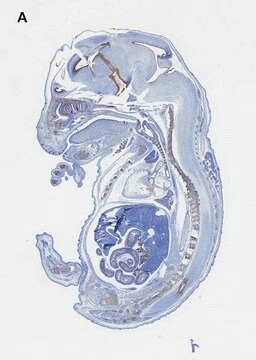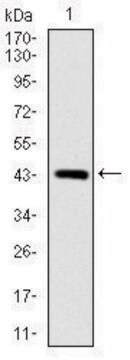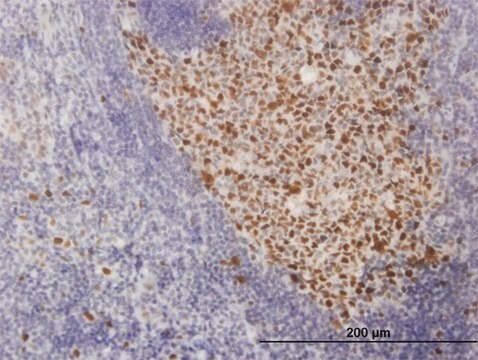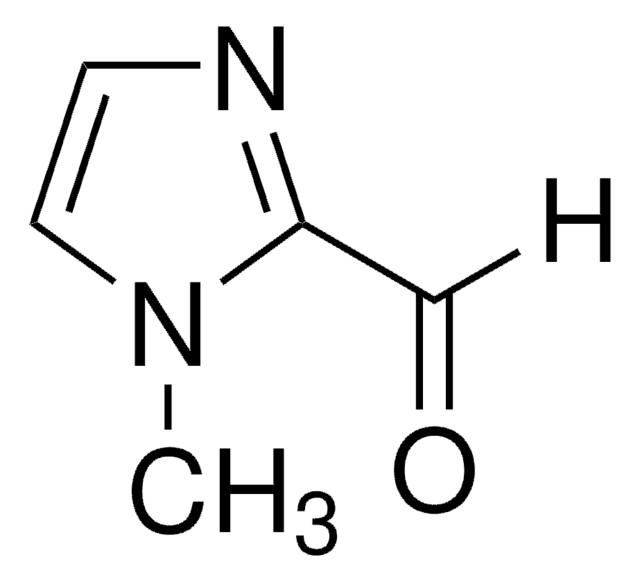ABE2868M
Anti-SOX9 Antibody
rabbit polyclonal
Synonym(s):
Transcription factor SOX-9
About This Item
Recommended Products
Product Name
Anti-Sox9, from rabbit
biological source
rabbit
Quality Level
antibody form
unpurified
antibody product type
primary antibodies
clone
polyclonal
species reactivity
rat, mouse, human
packaging
antibody small pack of 25 μL
technique(s)
immunocytochemistry: suitable
immunohistochemistry: suitable (paraffin)
western blot: suitable
isotype
IgG
NCBI accession no.
UniProt accession no.
target post-translational modification
unmodified
Gene Information
human ... SOX9(6662)
General description
Specificity
Immunogen
Application
Epigenetics & Nuclear Function
Western Blotting Analysis: A representative lot detected SOX-9 in Western Blotting applications (Augereau, C., et. al. (2016). Hum Mol Genet. Epub ahead of print).
Western Blotting Analysis: A 1:2,000 dilution from a representative lot detected SOX-9 in HEK293T cells transfected with Sox-9 (Courtesy of Dr. Patrick Jacquemin atUniversité catholique de Louvain).
Immunofluorescence Analysis: A representative lot detected SOX-9 in PFA-fixed, paraffin-embedded pancreatic sections from an adult mouse; ductus (Augereau, C., et. al. (2016). Hum Mol Genet. 25(22):5017-5026).
Immunohistochemistry Analysis: A representative lot detected SOX-9 in PFA-fixed, paraffin-embedded liver (left) and pancreatic sections (right) of E14.5 mouse embryo, PFA-fixed, paraffin-embedded intestine sections of E14.5 mouse embryo (Augereau, C., et. al. (2016). Hum Mol Genet. 25(22):5017-5026).
Immunohistochemistry Analysis: A 1:1,000 dilution from a representative lot detected SOX-9 in e14.5 mouse liver and e14.5 mouse pancreas tissues.
Immunocytochemistry Analysis: A representative lot detected SOX-9 in PFA-fixed 3T3 cells overexpressing Sox9 (Augereau, C., et. al. (2016). Hum Mol Genet. 25(22):5017-5026).
Quality
Western Blotting Analysis: A 1:500 dilution of this antibody detected SOX-9 in 10 µg of L6 cell lysate.
Target description
Physical form
Storage and Stability
Other Notes
Disclaimer
Not finding the right product?
Try our Product Selector Tool.
Storage Class Code
12 - Non Combustible Liquids
WGK
WGK 1
Flash Point(F)
Not applicable
Flash Point(C)
Not applicable
Certificates of Analysis (COA)
Search for Certificates of Analysis (COA) by entering the products Lot/Batch Number. Lot and Batch Numbers can be found on a product’s label following the words ‘Lot’ or ‘Batch’.
Already Own This Product?
Find documentation for the products that you have recently purchased in the Document Library.
Our team of scientists has experience in all areas of research including Life Science, Material Science, Chemical Synthesis, Chromatography, Analytical and many others.
Contact Technical Service








